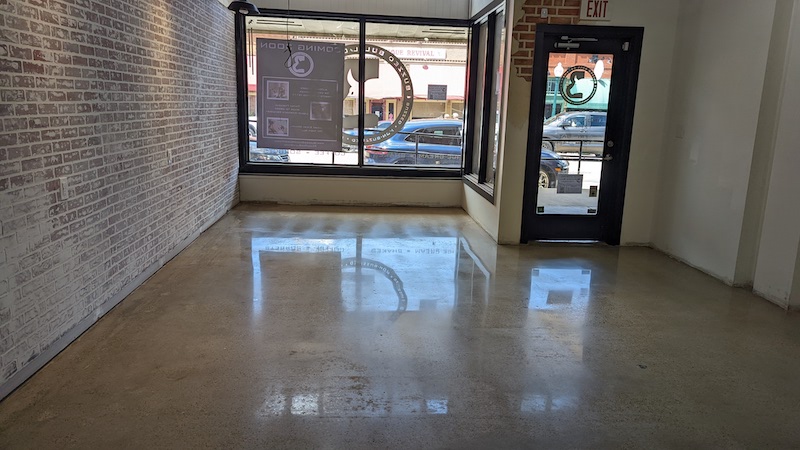Exploring Polished Concrete Floors: Are They Slippery?
Here in the Lone Star State, we’re all about durability and versatility when it comes to our floors – and concrete’s definitely high on the list of go-to options. But when it comes to polished concrete floors, some folks might be worried about the slippery factor. So, let’s dive into the nitty-gritty of slip-resistance in polished concrete floors, and clear up any misconceptions about this popular flooring choice.

The Importance of Slip-Resistance
We all know that slip-resistance is crucial when it comes to keeping folks from slips, trips, and falls – and those types of accidents can lead to some serious injuries. There are a whole bunch of factors that play into slip-resistance, like the surface texture and profile of the flooring, the presence of contaminants like water or oil, and the type of footwear folks are wearing.
Polished Concrete and Slip-Resistance
Polished concrete floors have a glossy and smooth surface, so it’s no wonder that some folks might think they’re slippery. But it’s not just about looks – the slip-resistance of polished concrete is determined by a whole lot more. The American Society for Testing and Materials (ASTM) has put together a standard test method (ASTM C1028) to measure the slip-resistance of flooring surfaces, and that includes polished concrete. This test looks at the coefficient of friction (COF) between the flooring surface and a test shoe, under controlled conditions.
The COF of polished concrete can change based on a whole bunch of factors – like the level of polishing, the type of aggregate used in the concrete, and any sealers or coatings that are applied to the surface. According to ASTM, the COF for polished concrete can range from 0.6 to 0.8 – which is considered to be a medium level of slip-resistance. That’s pretty similar to the COF of other common flooring options, like ceramic tile and vinyl flooring.
Factors Affecting Slip-Resistance in Polished Concrete
While polished concrete floors have a medium level of slip-resistance, there are a few things that can impact the slip-resistance of a polished concrete floor.
Contamination: Water or oil on the surface of polished concrete can really cut down on the slip-resistance. That’s why it’s important to keep polished concrete floors clean and dry.
Footwear: The type of shoes folks are wearing can also affect the slip-resistance of polished concrete. Rubber-soled shoes provide better traction on polished concrete than leather-soled shoes.
Level of Polishing: The level of polishing can affect the slip-resistance of polished concrete. A higher level of polishing will create a smoother surface, which can reduce slip-resistance.
Time to Upgrade Your Floors?
All in all, polished concrete floors aren’t naturally slippery, and they can have a medium level of slip-resistance. While the glossy and smooth surface of polished concrete might give the impression of being slippery, it’s important to take into account all the factors that can affect slip-resistance – like contamination, footwear, and the level of polishing. At Flores Decorative Concrete, we offer top-notch concrete polishing services that can help enhance the safety and longevity of your floors. Contact us today to get a concrete polishing estimate.
